Hough Transforms in Image Processing
The Hough Transform (HT) is an integral feature extraction technique in image processing and computer vision, essential for detecting simple geometric shapes like lines, circles, and ellipses in images. It is especially effective in identifying distorted, incomplete, or partially obscured shapes, making it invaluable when traditional edge detection methods fall short. The HT operates by transforming image space into parameter space, enabling the detection of shapes through pattern identification in this transformed space.
The HT uses a voting mechanism in the parameter space to highlight potential object candidates. This approach is beneficial for handling image noise and dealing with incomplete feature boundaries, making it a robust tool in various applications like medical imagery and manufactured part analysis. While the classical HT focuses on standard curves and is computationally less intensive, the generalized HT caters to more complex shapes where simple analytic descriptions are not feasible.
This article delves into the workings of the Hough Transform, detailing its mathematical foundation, advantages, limitations, and diverse applications in image analysis.
History
The Hough transform was first proposed by Paul Hough in 1962 as a method for detecting lines in images. It was later extended to detect other shapes like circles and ellipses. The technique has since been widely used in image processing applications, particularly in the areas of computer vision and pattern recognition.
What is Hough Transform?
The Hough transform in image processing is a technique used to detect simple geometric shapes in images. It works by transforming the image space into a parameter space, where the geometric shapes can be detected through the identification of patterns in the parameter space.
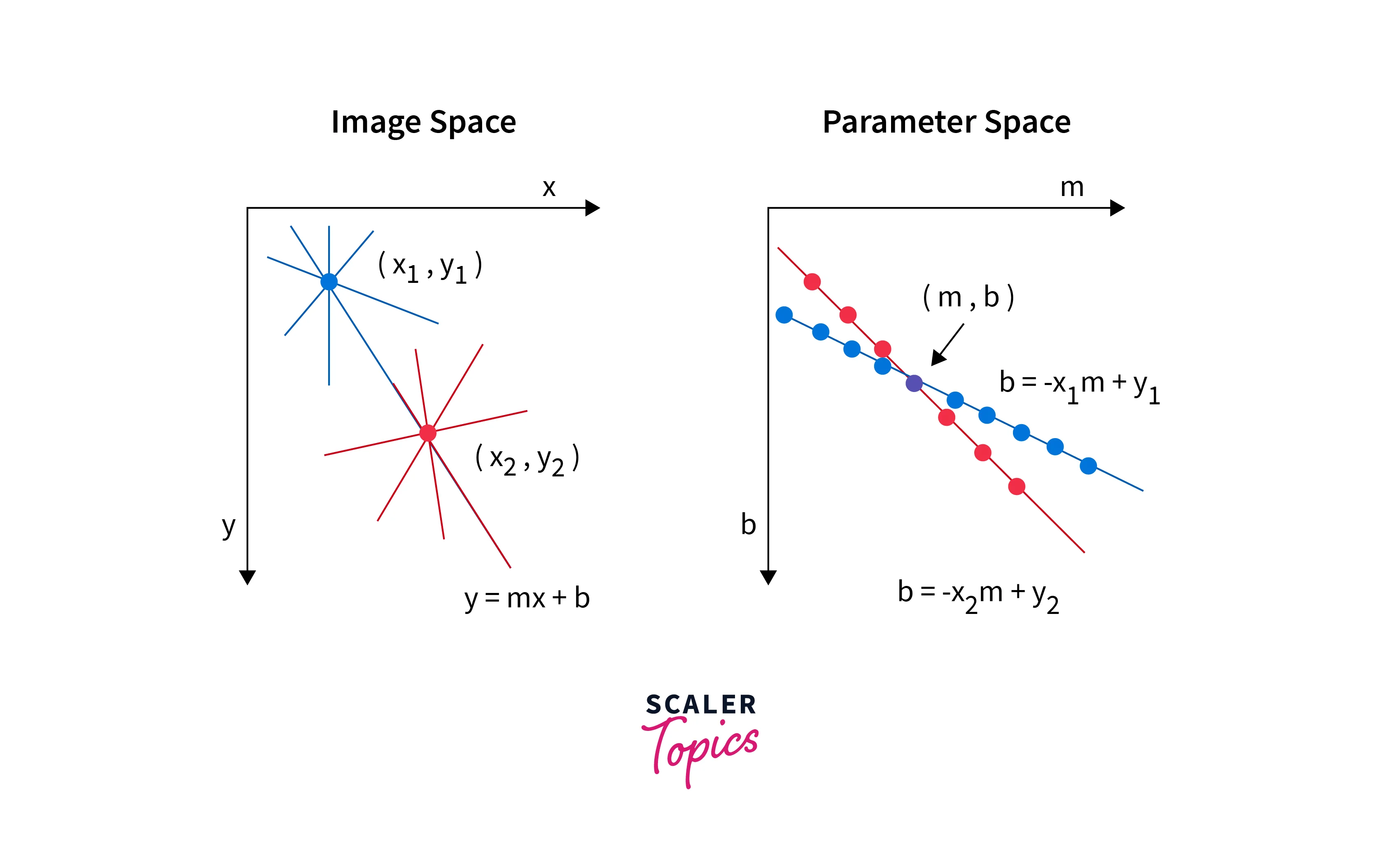
Why is Hough Transform Needed?
The Hough transform is needed because traditional image processing techniques like edge detection and thresholding are not always effective at detecting simple geometric shapes in images. These techniques can be particularly ineffective when the shapes are distorted, incomplete, or partially obscured. The Hough transform can detect these shapes by transforming the image space into a parameter space where the shapes can be more easily identified.
Original Image of the lane
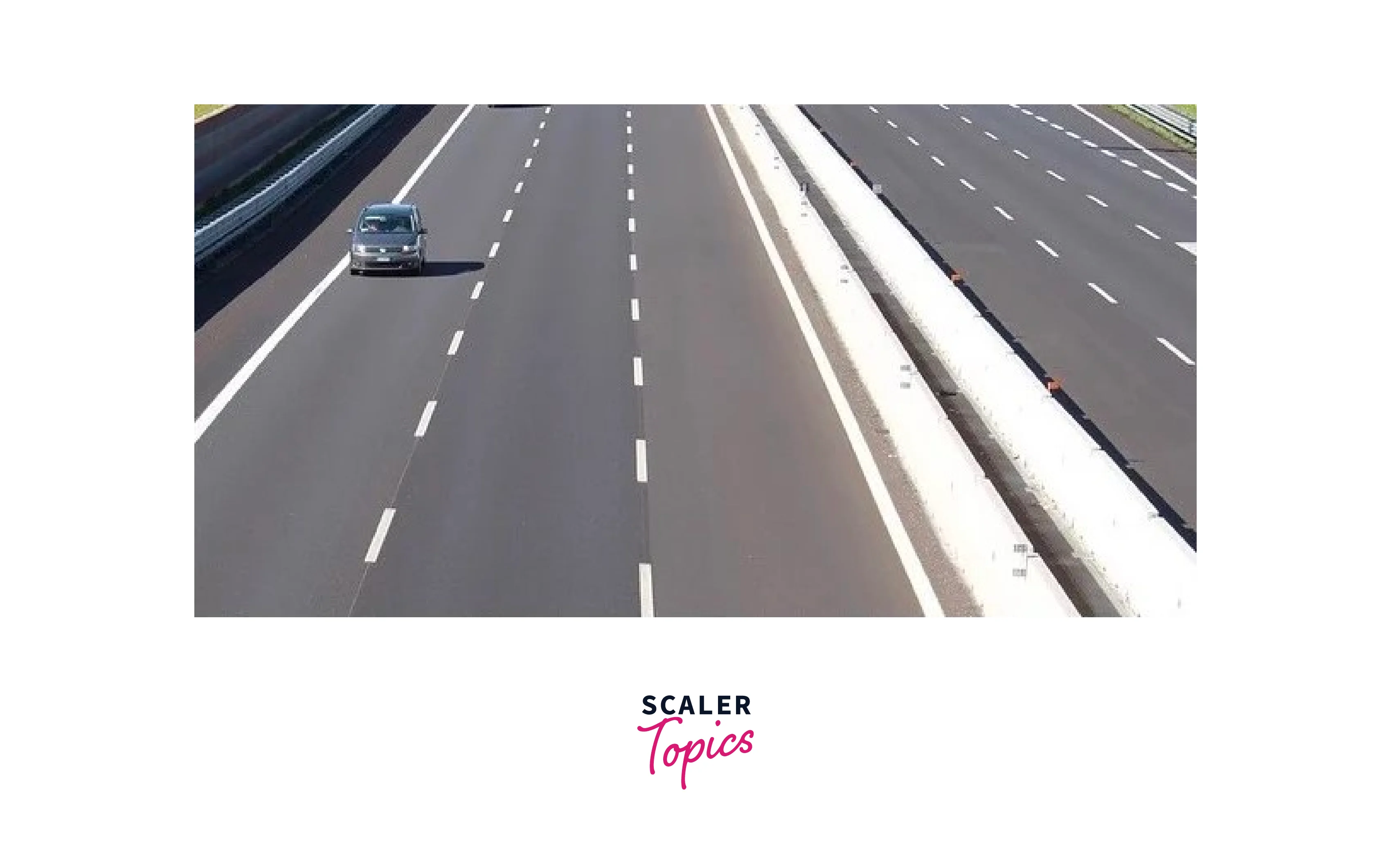
Image after applying edge detection technique. Red circles show that the line is breaking there.
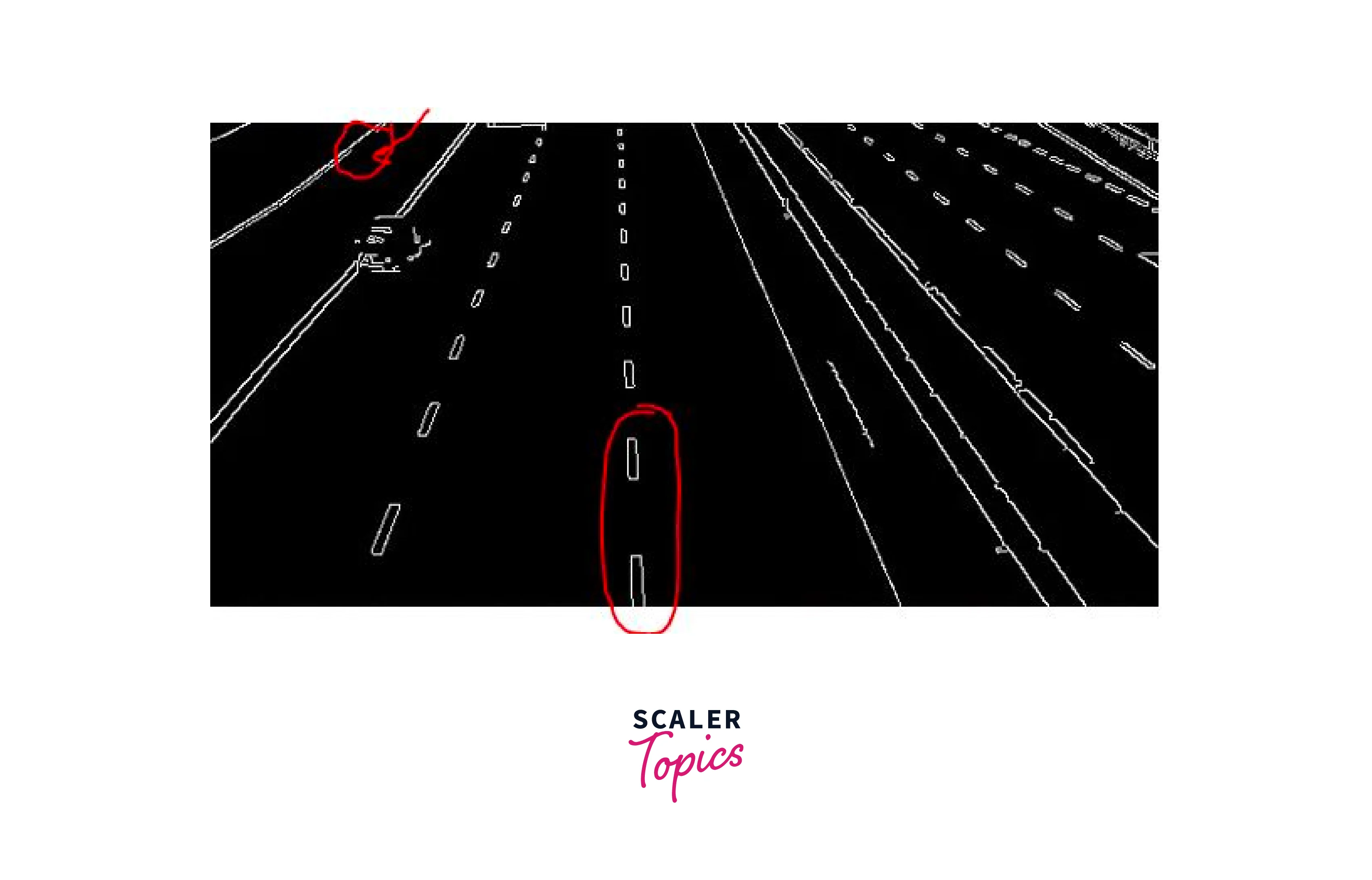
After using Hough Transform
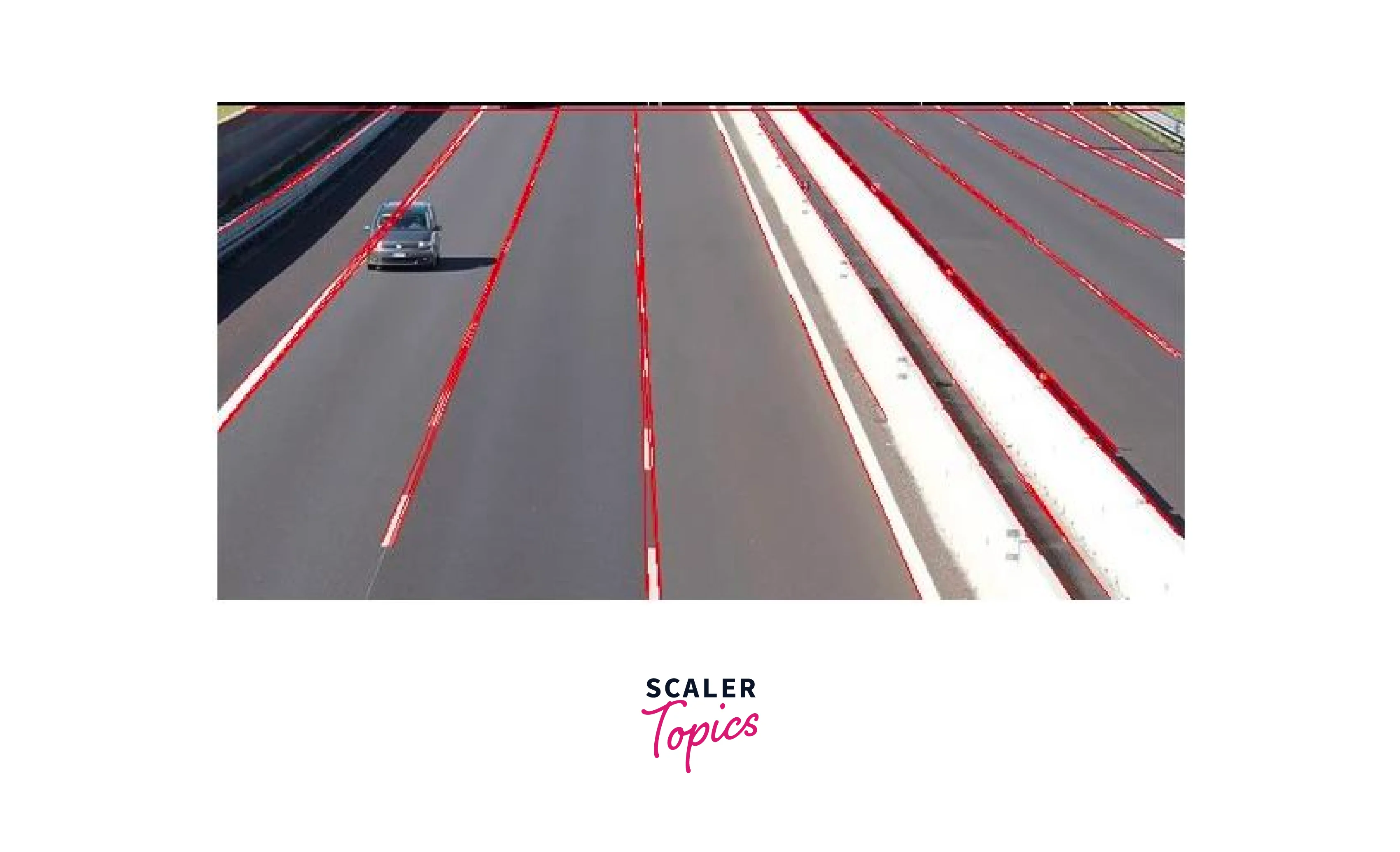
How does it Work?
The Hough transform in image processing works by transforming the image space into a parameter space. For example, in the case of detecting lines in images, the image space is transformed into a parameter space consisting of two parameters: the slope and the y-intercept of the line.
Each pixel in the image space is then mapped to a curve in the parameter space that represents all the possible lines that could pass through that pixel. The curves in the parameter space are then analyzed to detect the presence of lines in the image.
Algorithm
The algorithm of the Hough transform in image processing can be summarized as follows:
- For each pixel in the image, compute all the possible curves in the parameter space that pass through that pixel.
- For each curve in the parameter space, increment a corresponding accumulator array.
- Analyze the accumulator array to detect the presence of simple geometric shapes in the image.
Sum of Hough Transform
The sum of the Hough transform is a variant of the Hough transform in image processing that is used to detect circles and ellipses in images.
It works by transforming the image space into a parameter space consisting of three parameters: the x-coordinate of the center of the circle, the y-coordinate of the center of the circle, and the radius of the circle.
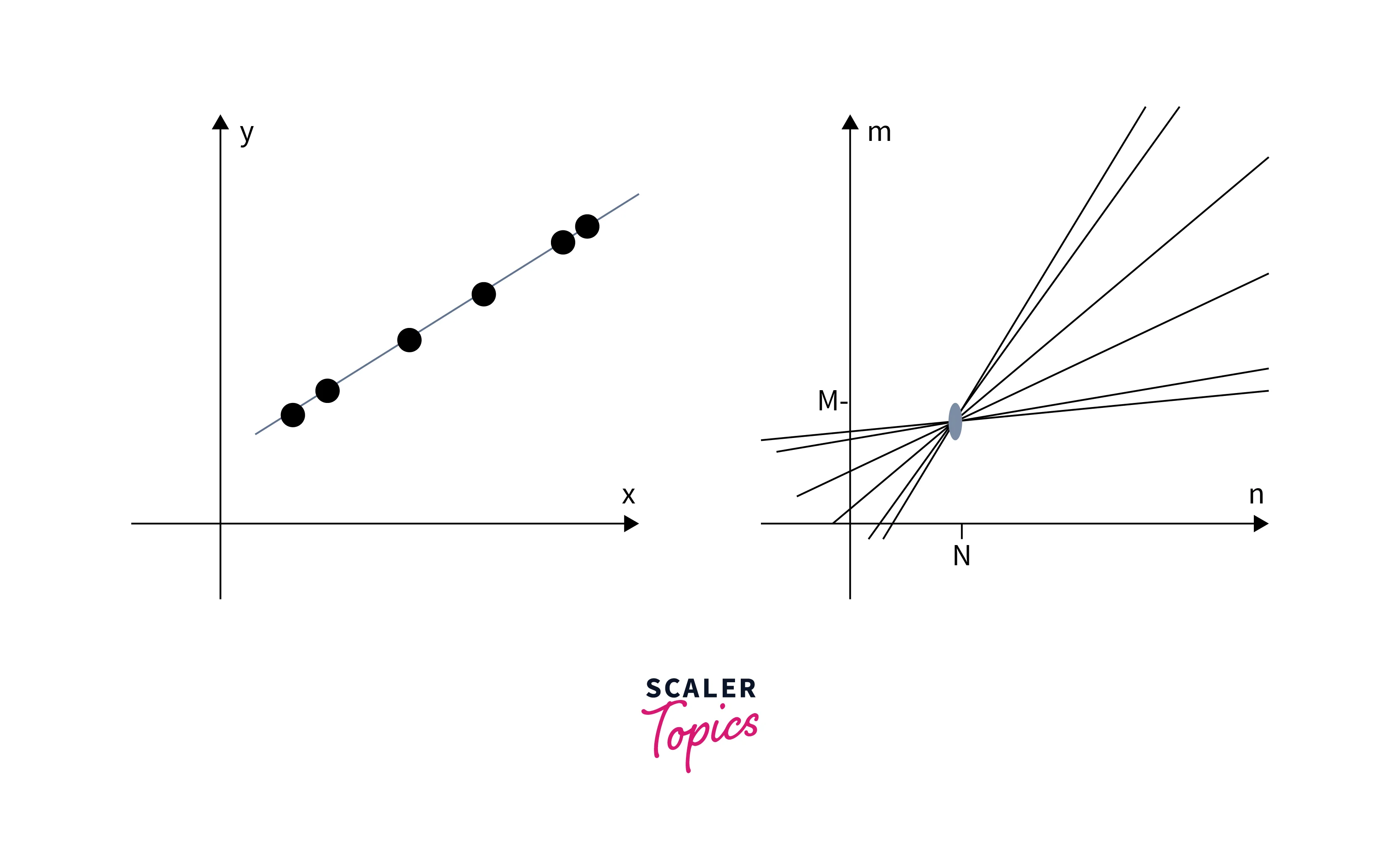
Each pixel in the image space is then mapped to a curve in the parameter space that represents all the possible circles that could pass through that pixel. The curves in the parameter space are then analyzed to detect the presence of circles and ellipses in the image.
Guidelines for Use
Here are some general guidelines for using the Hough transform:
- Preprocess the image: Before applying the Hough transform, it is recommended to preprocess the image to reduce noise, enhance edges, and improve contrast. Common preprocessing techniques include filtering, thresholding, and edge detection.
- Choose the appropriate variant: The Hough transform has several variants, and the choice of variant depends on the shape being detected, the level of noise in the image, and the computational resources available. It is important to choose the appropriate variant of the Hough transform for the specific application.
- Select parameters carefully: The Hough transform involves selecting several parameters, such as the threshold value, the minimum line length, and the maximum gap between line segments. It is important to select these parameters carefully to achieve the desired level of accuracy and efficiency.
- Use multiple scales: If the shape being detected varies in size, it may be useful to use a multi-scale Hough transform that detects shapes at different scales.
- Combine with other techniques: The Hough transform can be combined with other image processing techniques, such as template matching, machine learning, or feature extraction, to improve the accuracy and efficiency of shape detection.
- Validate the results: The Hough transform can sometimes produce false positives or false negatives, especially in noisy or complex images. It is important to validate the results of the Hough transforms using additional techniques, such as human inspection or additional image analysis methods.
By following these guidelines, the Hough transform can be a powerful tool for detecting shapes and structures in images.
Common Variants
There are several common variants of the Hough transform, including:
-
Probabilistic Hough Transform (PHT): The PHT is a variant of the Hough transform that randomly samples a subset of points from the input image and uses these points to detect simple geometric shapes. The PHT can be faster than the standard Hough transform and is particularly useful for detecting lines in noisy images.
-
Multi-Scale Hough Transform (MSHT): The MSHT is a variant of the Hough transform that detects shapes at multiple scales by transforming the image space into multiple parameter spaces. The MSHT is particularly useful for detecting shapes that vary in size and shape.
-
Generalized Hough Transform (GHT): The GHT is a variant of the Hough transform that can be used to detect arbitrary shapes, not just simple geometric shapes. The GHT works by defining a reference shape and then detecting occurrences of that shape in the input image.
-
Gradient Hough Transform (GHT): The GHT is a variant of the Hough transform that uses gradient information in the image to detect edges and corners. The GHT is particularly useful for detecting complex shapes that contain multiple edges and corners.
-
Radon Transform (RT): The RT is a variant of the Hough transform that is used to detect straight lines in images. The RT works by projecting the image along different angles and then detecting the presence of straight lines in the resulting projections.
These variants of the Hough transform can be used in combination with each other or with other image processing techniques to detect a wide range of shapes and structures in images.
Advantages
- The Hough transform is a robust technique for detecting simple geometric shapes in images, even when they are distorted, incomplete, or partially obscured.
- It is a versatile technique that can be applied to detect lines, circles, ellipses, and other simple shapes.
- The technique is relatively easy to implement and can be applied to a wide range of image processing applications.
- The Hough transform is computationally efficient and can be used to process large datasets.
- The technique is invariant to scale, rotation, and translation of the image, making it useful for object recognition applications.
Disadvantages
-
The Hough transform can be sensitive to noise in the image, which can lead to false positives and false negatives.
Example: Let's say we have an image with a few horizontal lines, and we want to detect them using the Hough transform. However, the image also contains some random noise that appears as small, sporadic dots.
When we apply the Hough transform to the image, the noise may create false maxima in the Hough space, leading to false positive detections of lines that don't exist in the image. On the other hand, the noise can also cause the true maxima of the Hough space to be suppressed, leading to false negatives where actual lines are missed in the detection process.
Therefore, it is important to preprocess the image to reduce the noise before applying the Hough transform to improve the accuracy of line and curve detection.
-
The technique can be computationally expensive, especially for large datasets or complex shapes.
This is especially true for large datasets or complex shapes, where the parameter space can become very large, requiring a significant amount of time and resources to process. In particular, the Hough transform can be computationally expensive for images with a high-resolution, as the number of points in the parameter space scales with the number of pixels in the image.
Additionally, the Hough transform is not very efficient at detecting curves with varying shapes, as these require more complex parameterizations that can lead to a more expensive parameter space.
-
The accuracy of the Hough transform depends on the choice of parameters, which can be challenging to select for complex shapes or images with a high degree of variability.
-
The Hough transform is limited to detecting simple geometric shapes and may not be effective for more complex shapes or structures.
Applications
Biometric and Man-machine Interaction
The Hough transform in image processing can be used in biometric applications, such as face recognition or fingerprint recognition. The Hough transform can be used to detect and localize specific features in the image, which can be used for biometric identification. It can also be used in man-machine interaction applications, such as gesture recognition, where the Hough transform can detect the position and movement of specific body parts.
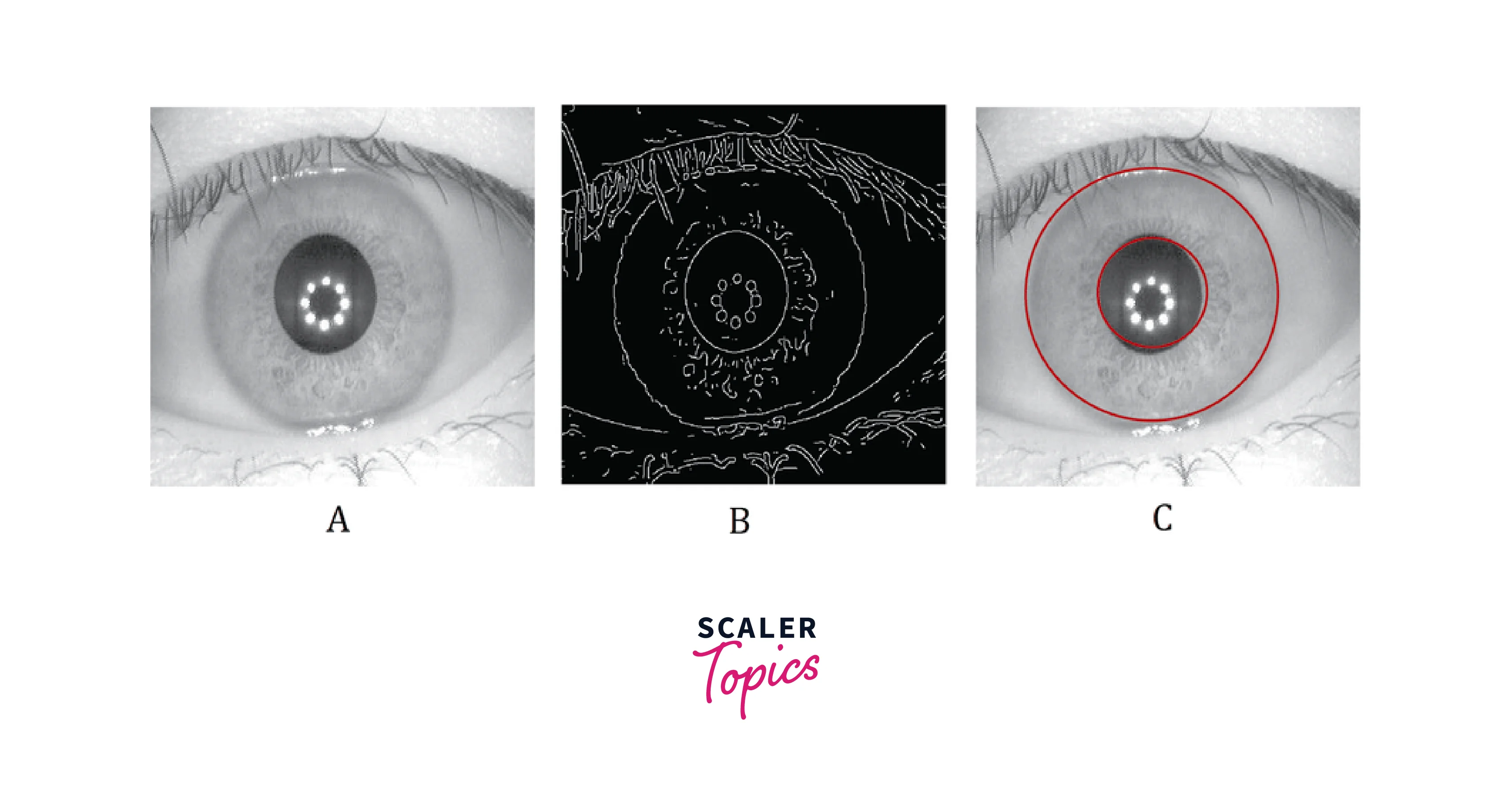
3D Applications
The Hough transform in image processing can be extended to three-dimensional spaces to detect three-dimensional shapes, such as planes or spheres, in 3D images or point clouds. This can be useful in applications such as 3D modeling, robotics, and computer vision.
Object Recognition
The Hough transform can be used for object recognition by detecting specific geometric shapes in images or point clouds. This can be useful in applications such as automated inspection, surveillance, or autonomous vehicles.
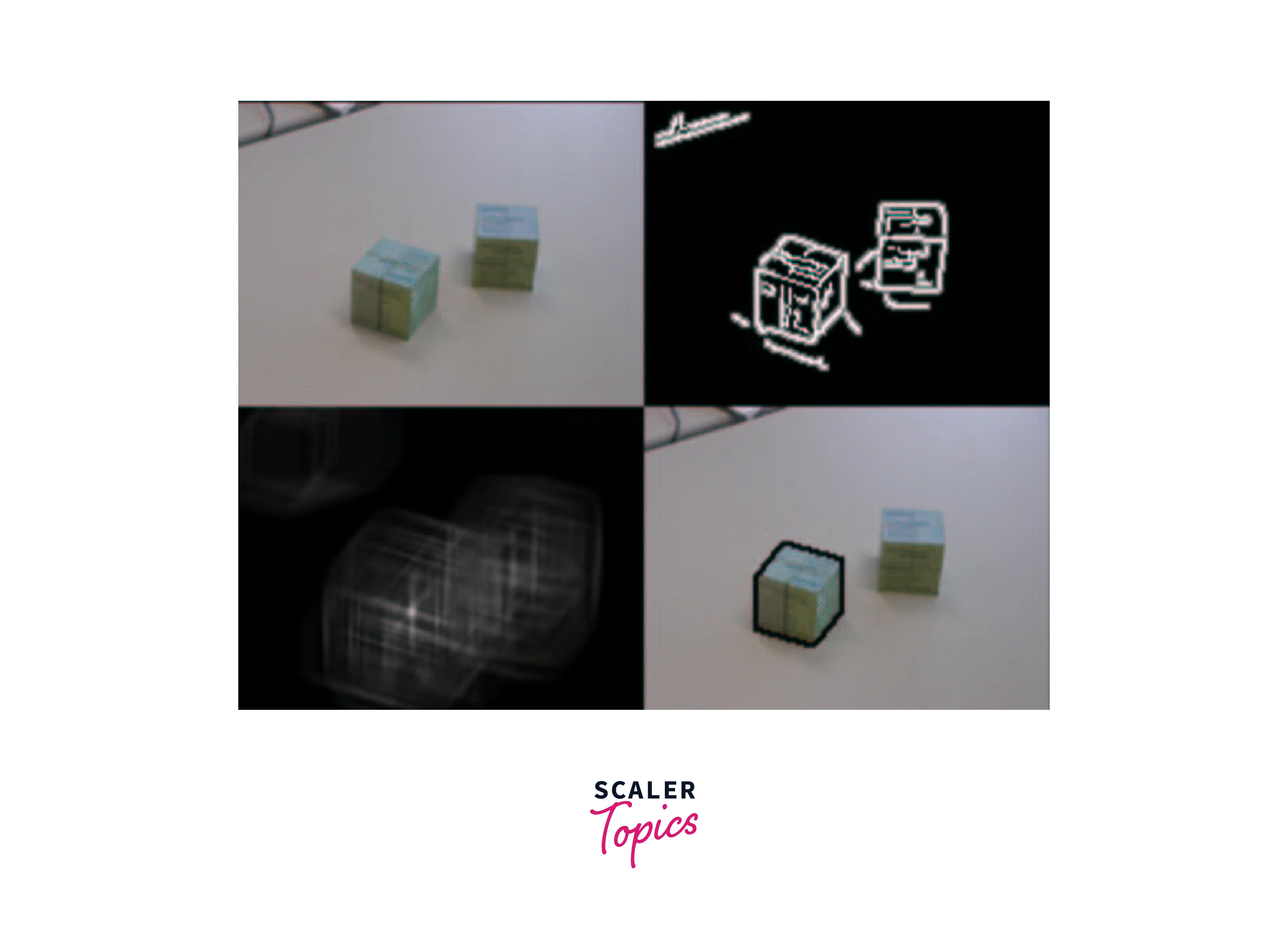
Object Tracking
The Hough transform can be used for object tracking by detecting and tracking specific geometric shapes over time. This can be useful in applications such as surveillance or autonomous vehicles.
Underwater Application
The Hough transform can be used in underwater applications, such as underwater object detection or mapping, where the Hough transform can detect and localize specific geometric shapes in underwater images or sonar data.
Industrial and Commercial Application
The Hough transform can be used in industrial and commercial applications, such as quality control or defect detection in manufacturing, where the Hough transform can detect and localize specific geometric shapes in images or point clouds.
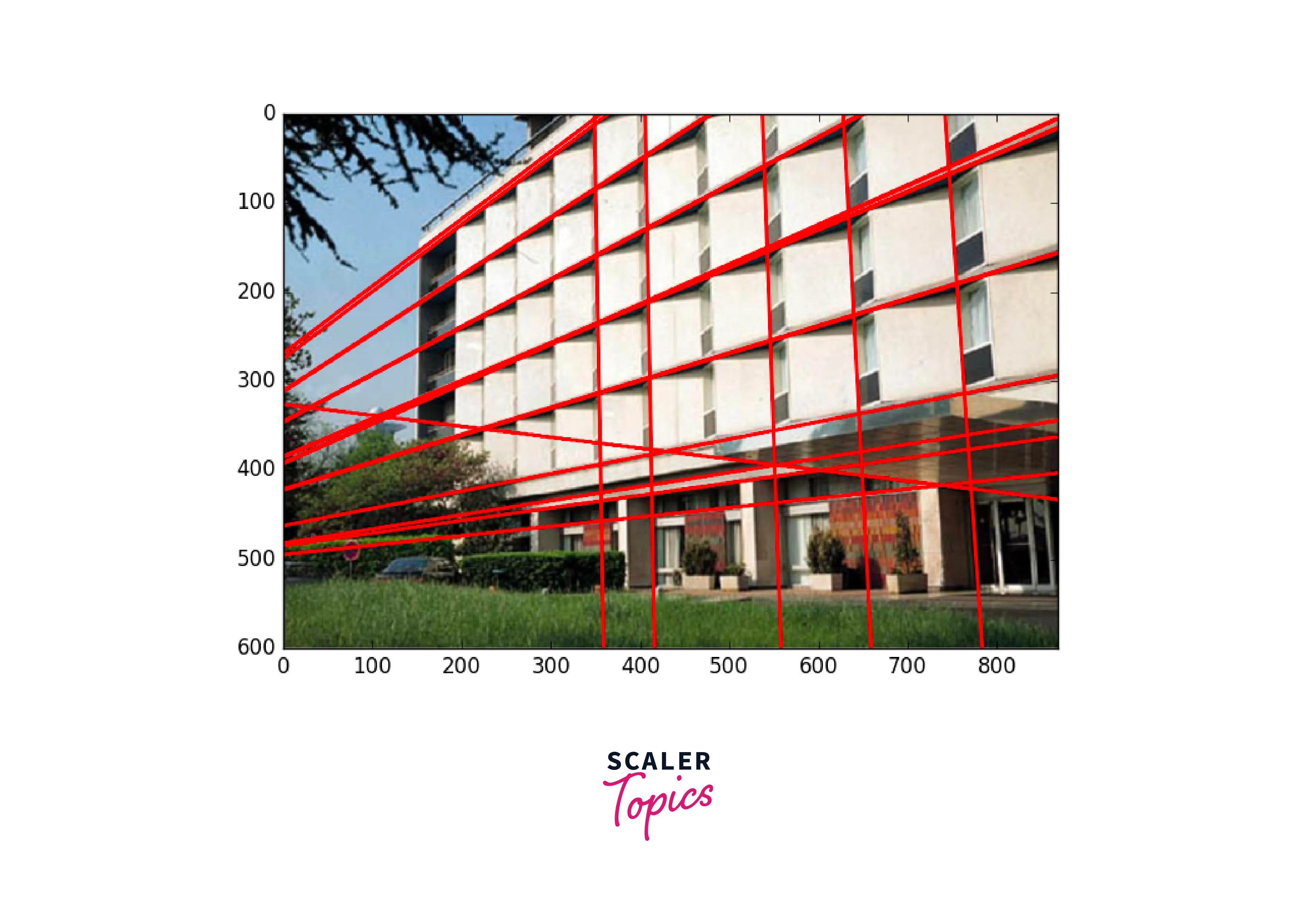
Medical Application
The Hough transform can be used in medical applications, such as image analysis or diagnosis, where the Hough transform can detect specific geometric shapes in medical images, such as tumors or blood vessels.
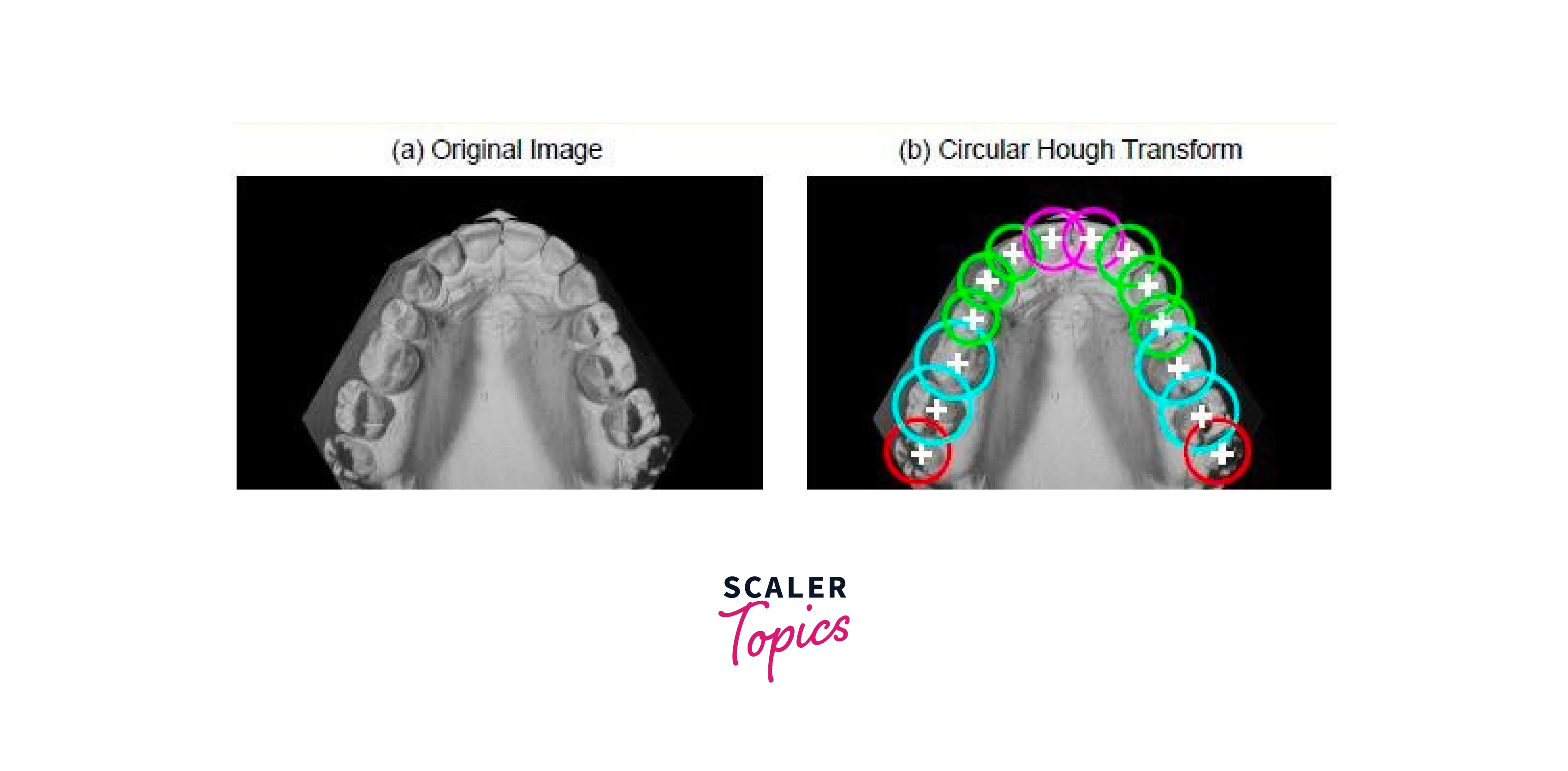
Unconventional Application
The Hough transform can be used in unconventional applications, such as music analysis, where the Hough transform can detect and extract musical patterns or rhythms from audio signals
Implementation of Hough Transforms In Image Processing
Requirements
To run the above code for line detection using Hough transform, you'll need the following requirements:
-
Python: You'll need to have Python installed on your system. You can download the latest version of Python from the official Python website: https://www.python.org/downloads/
-
OpenCV: OpenCV is a popular computer vision library that provides a wide range of functions for image and video processing. You can install OpenCV using pip (Python Package Installer) by running the following command in your command prompt or terminal:
-
NumPy: NumPy is a library for the Python programming language, adding support for large, multi-dimensional arrays and matrices, along with a large collection of high-level mathematical functions to operate on these arrays. You can install NumPy using pip (Python Package Installer) by running the following command in your command prompt or terminal:
Once you have installed Python, OpenCV, and NumPy, you can run the below code in a Python environment such as Jupyter Notebook or a Python IDE (Integrated Development Environment) like PyCharm or Visual Studio Code.
Line Detection Using Hough Transform
In this code, we first load an image and convert it to grayscale. We then apply edge detection using the Canny algorithm. The resulting edges are used as input to the Hough transform function, which detects lines in the image. Finally, we draw the detected lines on the original image and display the result.
Note that the Hough transform parameters rho, theta, and threshold can be adjusted to fine-tune the line detection performance.
Output
This is the input image
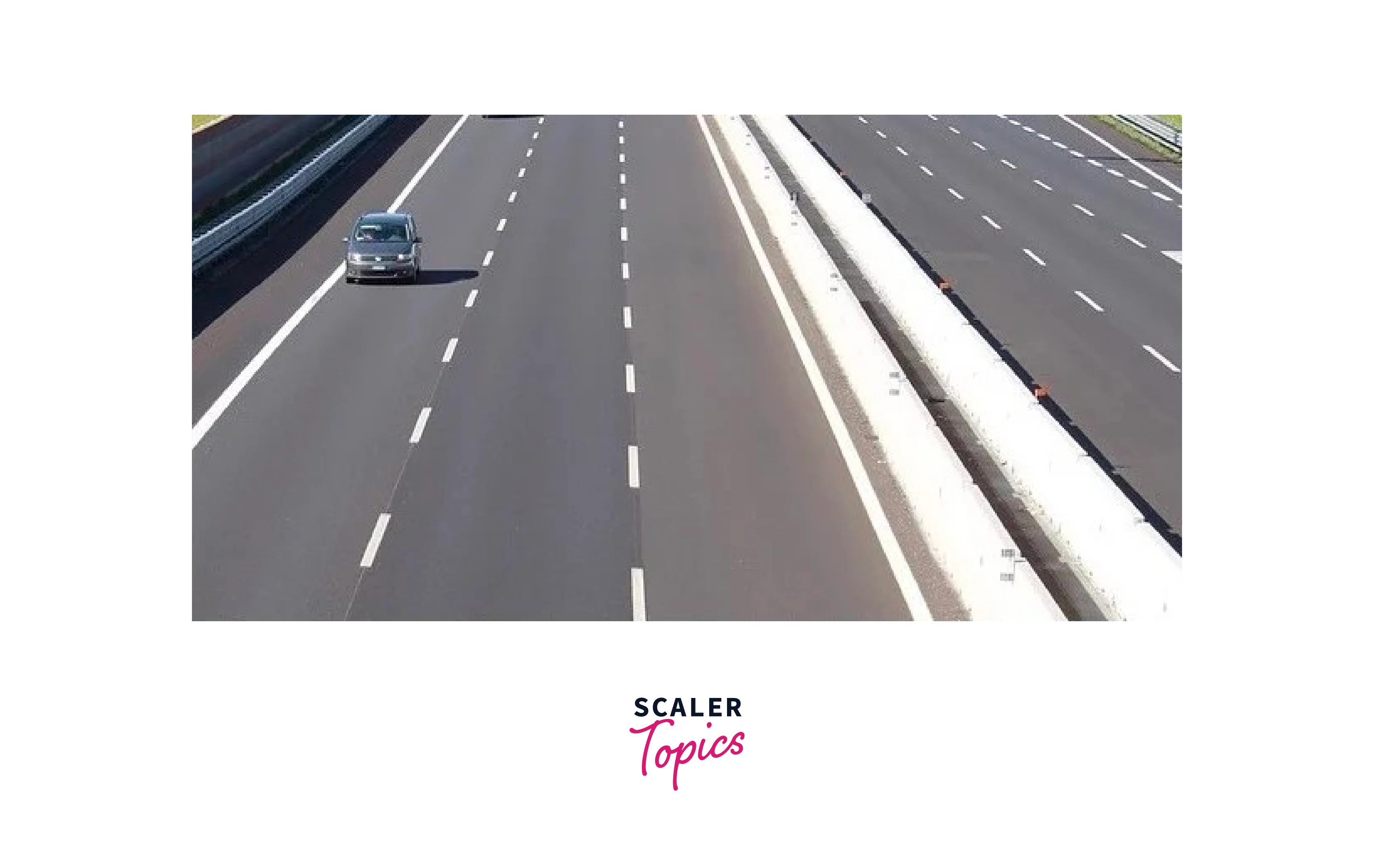
This is the output received
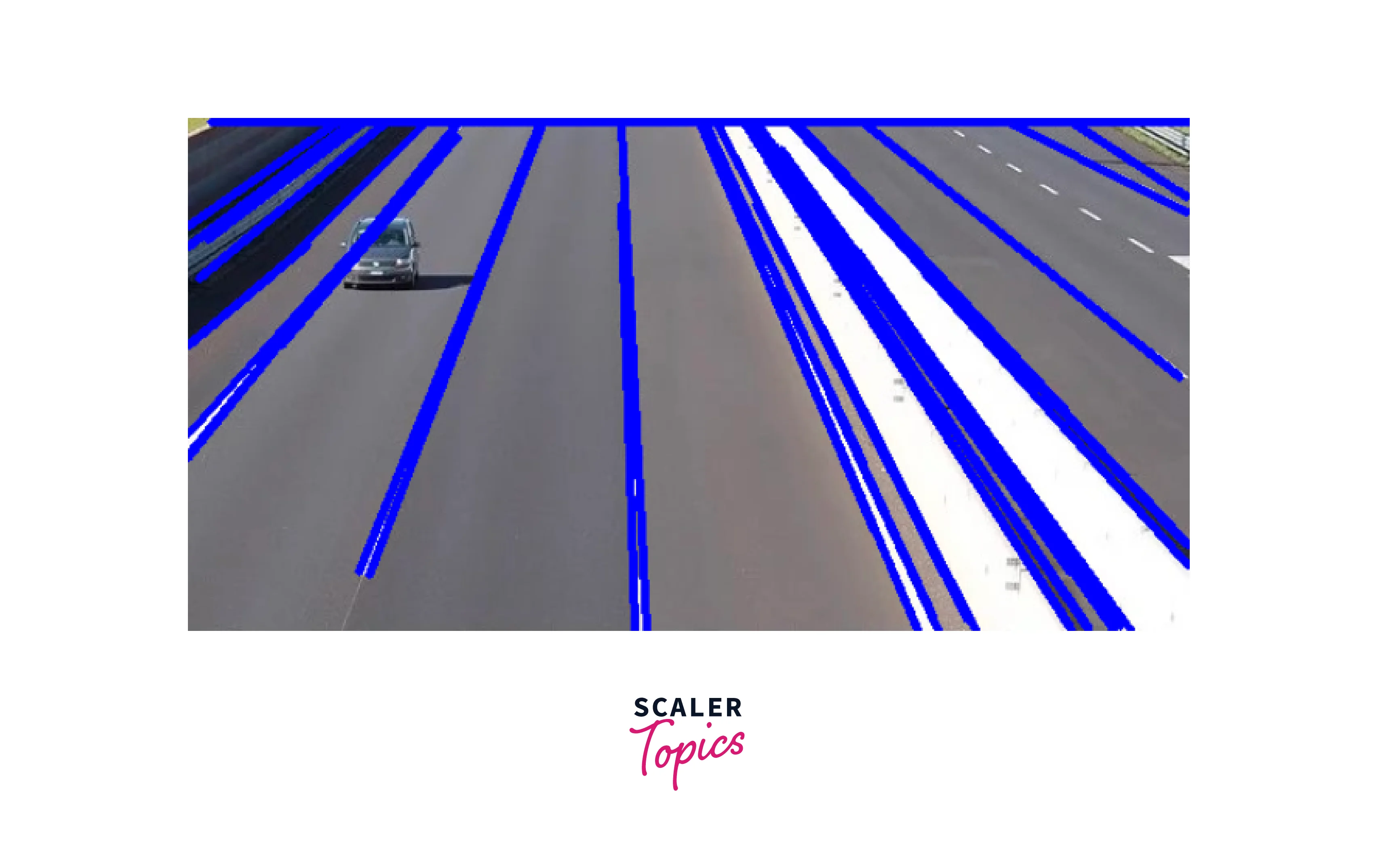
Circle Detection Using Hough Transform
Here's an example code for circle detection using Hough transform in Python with OpenCV:
In this code, we first load an image and convert it to grayscale. We then apply a Gaussian blur to reduce noise in the image. The resulting grayscale image is used as input to the HoughCircles function, which detects circles in the image. Finally, we draw the detected circles on the original image and display the result.
Note that the Hough circle detection parameters dp, minDist, param1, param2, minRadius, and maxRadius can be adjusted to fine-tune the circle detection performance.
Output
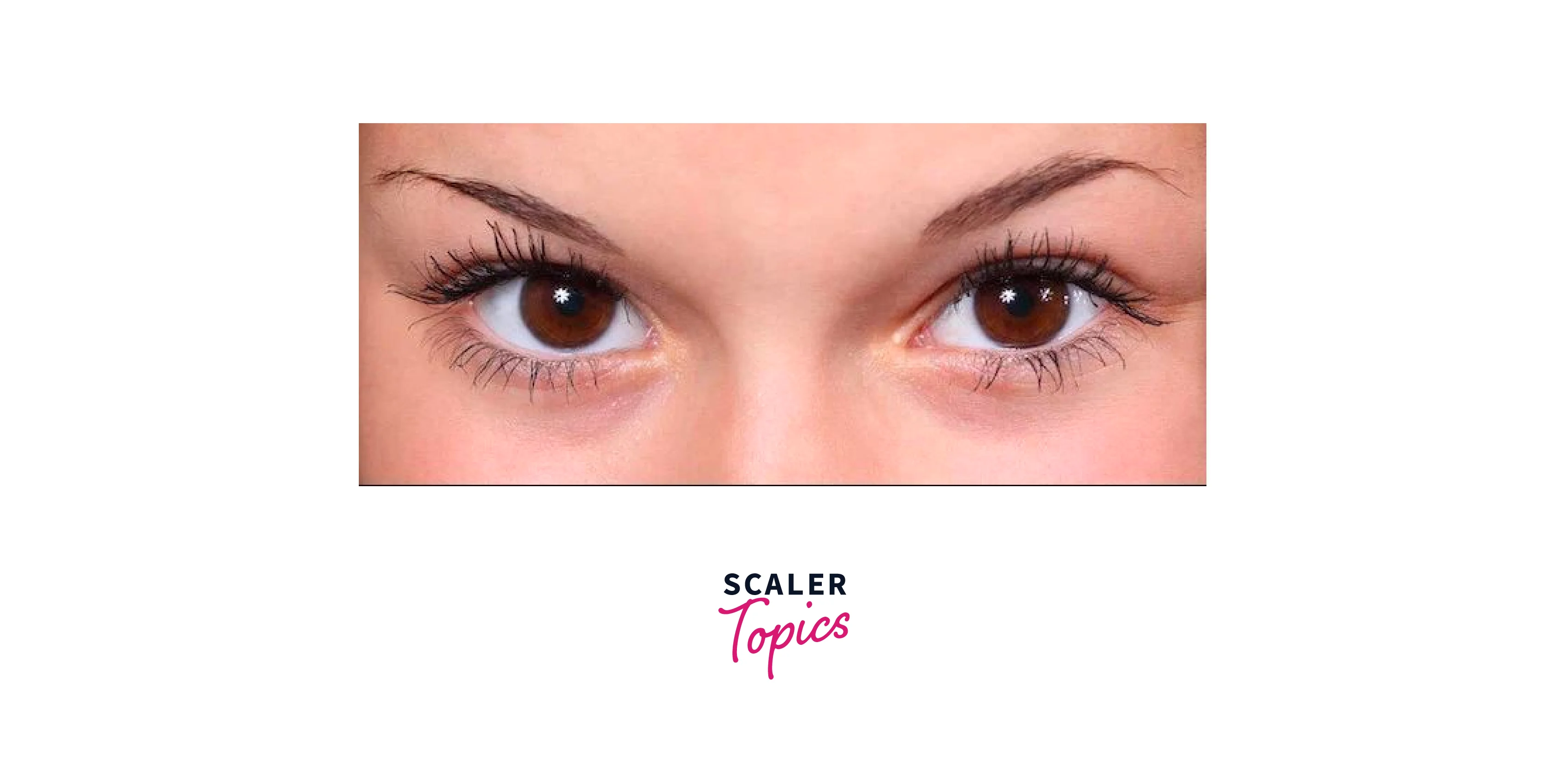
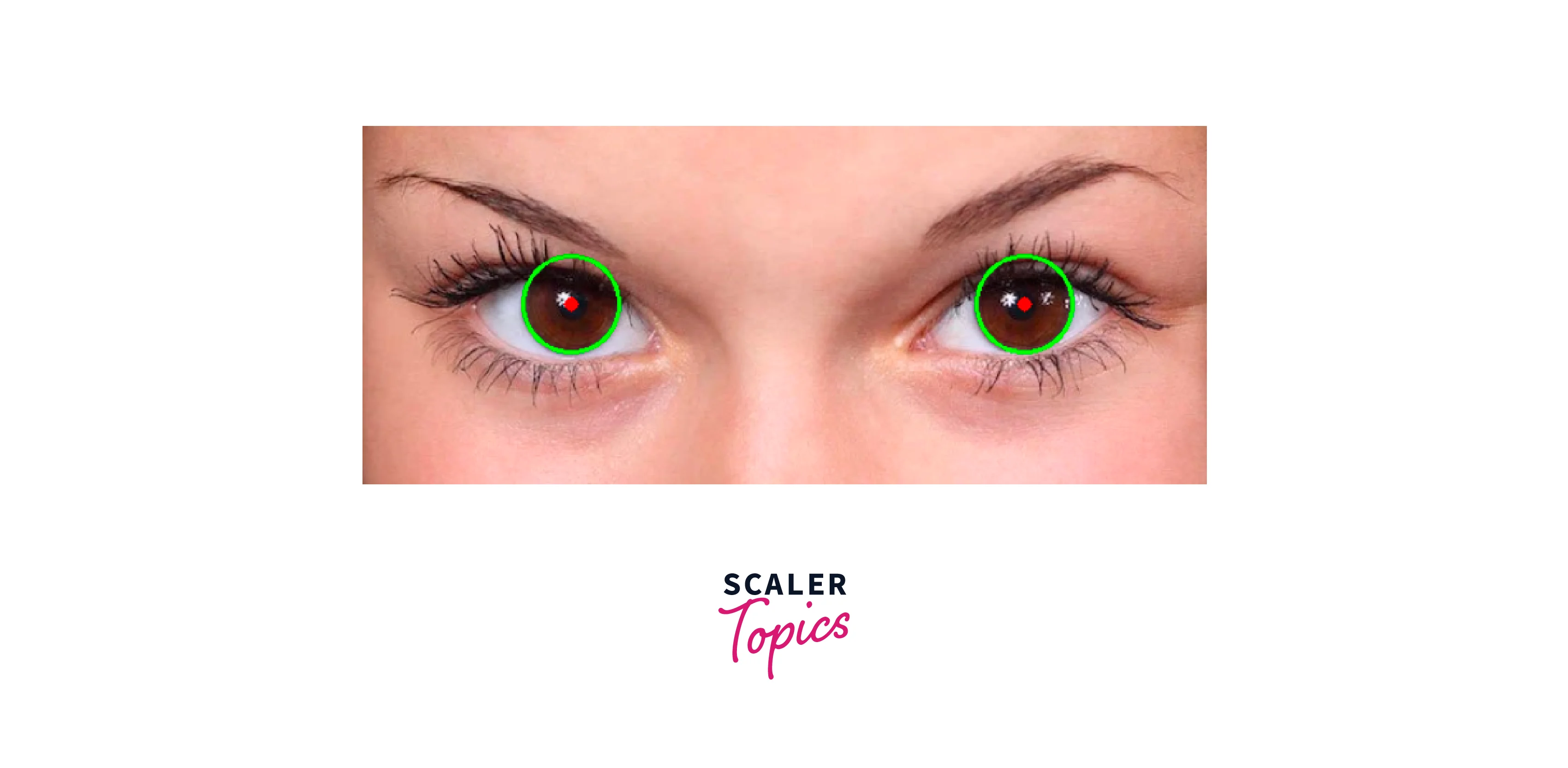
Conclusion
- In conclusion, the Hough transform is a powerful image-processing technique that can detect and localize specific geometric shapes in images or point clouds.
- It has numerous applications in various fields such as biometrics, man-machine interaction, 3D applications, object recognition, object tracking, underwater applications, industrial and commercial applications, medical applications, and unconventional applications like music analysis.
- The Hough transform can be customized to fit the specific needs of each application, and it can be combined with other image processing techniques for improved accuracy and efficiency.
- By following appropriate guidelines for use, the Hough transform can be a valuable tool for image analysis and computer vision tasks.
